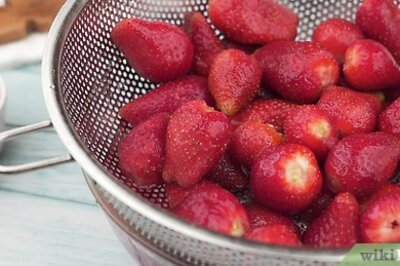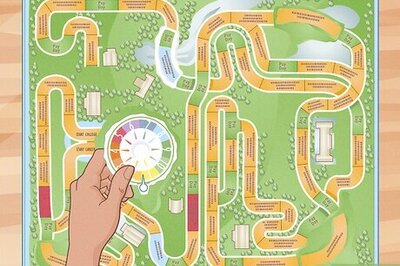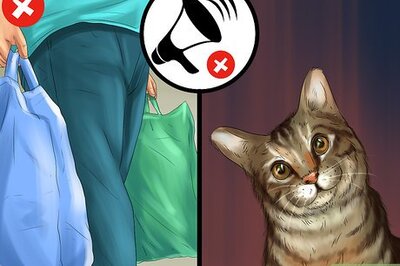
views
What is junk journaling?
Junk journaling is the art of making scrapbooks through found and recycled materials. A junk journal is a book or notebook—often handmade—that’s been turned into a journal full of found items that represent memories, thoughts, and ideas. The idea behind junk journaling is that it uses almost entirely found items (unlike scrapbooking) that would otherwise be discarded as trash—e.g., napkins, coffee cup sleeves, wrappers, brochures, spare change, ticket stubs, postcards, pressed flowers, bottle labels, etc. Instead of being thrown out, these pieces of “junk” are repurposed in the book and used to represent a certain memory, theme, or moment in time. Or, as Day puts it, “junk journaling is collecting what you would ordinarily throw away at the end of the day—like a receipt from a bookstore you went to, a losing lottery ticket, or a birthday card—and…gluing it into a composition book or journal of some sort.” It’s just to remind you, continues Day, “‘Oh yeah, I received this’ or ‘Oh yeah, I did this.’ It’s a diary without actually having to write, and you’re living in your diary or journal with these memories of things that you did on that day.” Meet the wikiHow Expert Renee Day is a crafting expert and content creator with specializations in paper crafts, brush lettering, journaling, stamping, stenciling, and doodling. Her Instagram account, @thediyday, has over 300K followers.
How to Make a Junk Journal
Decide the purpose for or theme of your junk journal. Your junk journal can be about whatever you want to be—which is one of the great parts about this crafting hobby! Most frequently, junk journals are treated sort of like a diary or daily journal. You can put in any items that you find throughout your day, which might help you to document and remember all of the little moments of your life. However, it might be easier for you to have a specific theme or purpose for your junk journal so that you can focus on one thing and narrow down the items you’ll include. Besides a daily journal, other potential themes or purposes for a junk journal include: Planner – Sketch a calendar into the journal, then add decorative “junk” items around it. Memory Book – Go through the memory box of a grandparent or parent and put together a book that commemorates their life. Art Journal – Sketch or paint on different pages and add in other “junk” items to create a mixed-media journal. Wedding – Include memories and items from your wedding (or other special event). Travel – Add keepsakes from one special trip, or any trips you go on. Nature or Flowers – Add items that are related to flowers, gardens, or the outdoors. Books or Literature – Write about books you’ve read and add in literature-related items.
Find or create a book to use as the base for your junk journal. The easiest way to get started with a junk journal is just to use a preexisting book, notebook, or journal. You can purchase a blank journal from any store and get started right away! You can also use a used hardcover book as a base—then all the typed pages will give you a background on which to paint, write, and paste in junk journal ephemera. Starting a junk journal “doesn’t have to be expensive,” affirms Day. “You could just use a 50-cent composition book” and it would work perfectly for your journaling purposes. You could also create your own book with crafting and bookbinding supplies, although this is more of an involved and challenging project. For example, some junk journalers sew their pages into the cover of a journal. Alternatively, for an easier book-binding method, you can just punch holes in your papers, then insert binder rings into the holes to bind the papers together. You’ll also want to attach a cover, which you could make out of construction paper, cardboard, cereal boxes, or another sturdy material.
Get basic craft supplies, like tape, glue, scissors, and writing utensils. In theory, you need little to no craft supplies for junk journaling—it’s all about found and recycled items that you didn’t have to purchase! A win for your monthly budget! That being said, you’ll want to invest in some basic supplies to put your book together, such as glue, double-sided tape, scissors, book-binding supplies, and a stapler, advises Day. Optionally, you can also purchase extra embellishments like colorful paper, fabrics, stickers, or stamps.
Decorate the front cover of your journal, if desired. If you want to add some flair or personalization to the cover of your journal, consider covering it with a pretty piece of cardstock or fabric. You can also add a closure to the journal (e.g., a snap button or elastic closure) to ensure it stays tightly closed after you start filling it up with items. You might also like to add a bookplate, journal topper, or any other decorations that your heart desires!
Fill up your journal with all of the “junk” you’ve found. And now, for the most important part—putting junk in your junk journal! “There are no limitations with junk journaling,” explains Day, “so you could just throw whatever junk you want in your journal.” Some people like to organize their items and pages in very specific layouts, while others prefer to wing it and follow their intuition to lay out their ephemera. Some people like to collect a bunch of items and put them in the journal all at once, while others ike to collect and paste in items as they go. Whatever floats your boat—it’s your journal! That being said, there are some common threads in the world of junk journaling. Layering items is popular, for instance, since it gives more depth and visual interest to your pages. Also, it’s common to accentuate pages with extra items (besides your “junk”) like stickers, scraps of paper, stamps, ribbons, lace, charms, coins, etc. Other 3-D items that work well in junk journals to add depth and layers include washi tape, sticky notes, paper clips, and bookmarks. More than anything, make sure that your junk journal reflects your personality. More than being super aesthetic or appealing to others, your junk journal should be original, fun, and show off what makes you happy and excited.
Junk Journal Techniques & Crafts
Use different sizes, shapes, colors, and textures of paper. Junk journals often look best with varying layers of materials, and collecting different types of paper is an easy way to achieve this effect. You can cut different colors, patterns, and textures (e.g., sparkly) of cardstock into various shapes and sizes that suit your journal pages. If all you have are normal pieces of paper, you can also funk them up a bit by distressing them with sandpaper or dying them with natural materials, i.e., coffee, tea bags, onion skins, pomegranate skins, orange peels, red berries, and herbs.
Add pockets (with hidden elements inside) to your pages. Pockets are an awesome and easy way to add some dimension and variety to your junk journal. You can make pockets with all kinds of things, but Day specifically recommends reusing junk mail envelopes (or any kind of envelope!): “[An envelope] adds a nice pocket into journaling, so you can keep stickers, pictures, or whatever [trinkets] you have inside that envelope. Also, if you decorate your junk mail envelope, it doubles as something to look at as well as something to store within the journal.”
Make “clusters” of multiple pieces of ephemera. While it’s certainly fine to just paste in individual pieces of “junk,” you can also group them into clusters for added visual embellishment. For example, you could take a few arcade tickets and fan them out in a nice design before gluing them together. Consider decorating or fastening them further with stickers, labels, cut-out words, buttons, or paper fasteners. You can do the same with any type of junk items, including scraps of fabric or lace!
Use leftover fabric scraps to make ruffles, page edges, or fabric “flips.” If you have some leftover fabric from past craft projects, you can easily use it in your junk journal rather than tossing it out! Paste in the fabric as is, or create a fabric ruffle (with a sewing machine or by hand) that can be pasted down the side of a page. Another option is to add a fabric flip—just cut (or rip) a piece of fabric that fits on your journal page. Then, glue the top edge of the fabric onto the page so that it can be flipped up and reveal a drawing, journal entry, or other piece of ephemera underneath.
Use cellophane from old envelopes to create see-through windows. If you have a piece of junk mail lying around and “there’s an envelope with a window,” Day says to “trace out and then cut out that portion, because it adds a neat look to an envelope. When you start adding paper inside the envelope, you can see that patterned paper inside, even when you’re looking at it from the outside.”
Junk Journal Page Ideas
Pop-Up Page Create a folded paper card that fits snugly inside the pages of your junk journal. Cut 1-3 small rectangular tabs into one side of your card—these will hold your pop-up elements, so you generally want to have as many tabs as you have elements. Then, create the items that will “pop up” when you open this page in your junk journal. Cut out simple shapes or use photos, but just make sure they’re small enough to be supported by the tabs and won’t hang off the edge of your card when it’s closed. Lastly, glue your elements to the tabs and glue the back of the card to your journal page (but don’t glue down the tabs!).
Nature Walk Go on a nature walk, hike, or beach day and collect various items to put into your journal. You could draw out a map of your trek, sketch botanical drawings of things you saw, or write a journal entry of how you felt while out in nature. As for your ephemeral items, collect some twigs, pressed flowers, pressed leaves, or whatever else you can find.
Book & Movie Reviews If you’ve recently watched a significant movie or read a great book, write a review for it in your journal. Alongside your review, include printed-out images from the film, cut-out quotes from the book, and images or stickers that remind you of the subject matter. You could also paste in any items related to your viewing or reading experience—e.g., the tea bag that you were sipping on during your read or the ticket stub from your cinema trip.
Currently On Repeat Create a collaged playlist to capture a moment in your life and what tunes define it. Go onto Spotify, Apple Music, or whatever music service you use, and find your most recently played and replayed songs. Write these songs into your journal with lyrics, printed-out album covers, and anything else that reminds you of your playlist and what type of music is resonating with you right now.
Recipe Book If you’ve recently tried out a fun new recipe (like baking a cake or making a pitcher of cocktails), include that experience in your journal! Write in parts of the recipe itself alongside doodles of the ingredients, food labels from your cooking process, and actual photos of the finished product. You could even write a small review or summary of how much you liked the recipe, what you’d do next time, and who you shared the culinary experience with.
What to Write About in a Junk Journal
Write about whatever you want, from daily reflections to special memories. Junk journals have no rules, so you can write about whatever you want—or you can write nothing at all! If you do want to include written entries in your junk journal, consider writing about daily events (like a diary), positive affirmations, personal memories, or goal manifestations. Here are some more writing prompts to inspire your junk journal entries: Write about the most interesting part of your day today. Write down a mundane conversation you had over coffee or a meal today Write down today’s weather and temperature in a corner, and sketch a scene from outside your window next to it. Write about a moment today that you’re thankful for. Write about a loved one that you’ve lost and a time the two of you laughed together. Write down a quote that is your motto in life. Log the foods you cook each week and create a rating system for trying them again. What are your favourite song lyrics and why? If you could talk to your 20/30/40/50/60-year-old self, what would you say? Find a picture in a book or magazine and answer this question: “What does this picture mean to you or make you think of?”
What’s the purpose of junk journaling?
Junk journaling can be a great tool for mindfulness and self-care, and it’s fun! Lots of people get into junk journaling because they’re looking for a fun and creative hobby to pass the time, and that’s reason enough to get into the craft. However, junk journaling may also have some psychological benefits, including lowered stress and anxiety, increased mindfulness, and greater feelings of gratitude and joy. Since junk journaling allows for self-expression without any rigid rules, it can be freeing and anxiety-relieving for people who’d normally overthink or stress over detailed crafts. Like most crafts, junk journaling can also pull your focus away from any stressors or intrusive thoughts since you’re fully zoned in on selecting, cutting, and pasting your items. This can make you feel more mindful, present, and calmer. Junk journaling also has the special benefit of cultivating gratitude and joy. Since the entire practice of junk journaling revolves around finding meaning and happiness in what would otherwise be viewed as trash, it can give you a visual and tactile reminder of all the little things that bring happiness and joy to your life. If junk journaling isn’t really your thing, there are many other types of crafts and hands-on hobbies that offer similar benefits, including: Bullet journaling Coloring Collage-making Clay modeling Crocheting Diamond art Knitting Gardening Zentangling
Resources for Further Learning
Learn more about junk journaling with these books, websites, and content creators. While junk journaling itself is a pretty straightforward craft, there are so many cool techniques and page ideas that you can learn and get inspiration from. Here are some of the best resources you can use to learn more about junk journaling: Books: Stash & Smash by Cindy Shepherd Pieces of Me: A Guided Junk Journal by Rebecca Black A Year of Junk Journaling by Martina Calvi Blog Sites: House of Mahalo Junk Journal Life Digital Junk Journals Instagram / TikTok Accounts: @junkjournaljoy @junkjournalclub @sebs.journal YouTube Channels: @TreasureBooks @megjournals @MargareteMiller


















Comments
0 comment